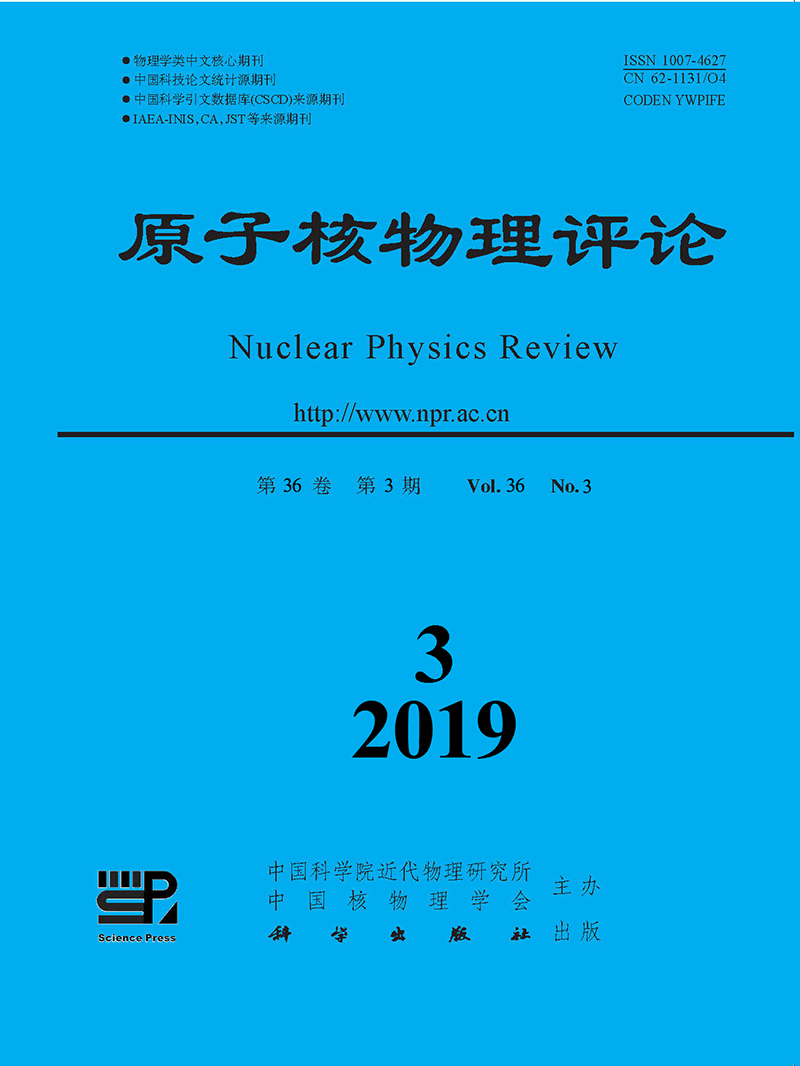|
[1]
|
LUNNEY D, PEARSON J M, THIBAULT C. Review of Modern Physics, 2003, 75:1021. |
|
[2]
|
BLAUM K. Physics Reports, 2006, 425:1. |
|
[3]
|
BOSCH F, LITVINOV Y A, STOHLKER T. Prog Part Nucl Phys, 2013, 73:84. |
|
[4]
|
XU H S, ZHANG Y H, LITVINOV Y A. International Journal of Mass Spectrometry, 2013, 349-350:162. |
|
[5]
|
MEI B, TU X L, WANG M, et al. Nucl Instr Meth Phys Res A, 2010, 624:109. |
|
[6]
|
TU X L, WANG M, LITVINOV Y A.et al. Nucl Instr and Met A, 2011, 654:213. |
|
[7]
|
ZHANG W, TU X L, WANG M, et al. Nucl Instr and Meth A, 2014, 756:1. |
|
[8]
|
FRANZKE B, GEISSEL H, MÜNZENBERG G. Mass Spectrom Rev, 2008, 27(5):428. |
|
[9]
|
YANO Y. Nucl Instr and Meth B, 2007, 261:1009. |
|
[10]
|
KUBO T, KAMEDA D, SUZAKI H, et al. Prog Theor Exp Phys, 2012, 2012:03C003. |
|
[11]
|
OZAWA A, UESAKA T, WAKASUGI M, et al. Prog Theor Exp Phys, 2012, 2012:03C009. |
|
[12]
|
UESAKA T, SHIMOURA S, SAKAI H, et al. Prog Theor Exp Phys, 2012, 2012:03C007. |
|
[13]
|
YAMAGUCHI Y, WAKASUGI M, UESAKA T, et al. Nucl Instr and Meth Pl B, 2013, 317:629. |
|
[14]
|
FRANZKE B. Nucl Instr and Meth B, 1987, 24:18-25. |
|
[15]
|
XIA J W, ZHAN W L, WEI B W, et al. Nucl Instr and Meth A, 2002, 488(1-2):11. |
|
[16]
|
MAKINO K and BERZ M. Nucl Instr and Meth A, 2006, 558:346. |
|
[17]
|
IWASA N, WEICK H, and GEISSEL H. Nucl Instr and Metho B, 2011, 269:752. |
|
[18]
|
GROTE H and SCHMIDT F. Particle Accelerator Conference 2003. Proceedings of the. IEEE, 2003:3497. |
|
[19]
|
KUMAGAI H, OZAWA A, FUKUDA N,et al. Nucl Instr and Meth A, 2001, 470:562. |
|
[20]
|
KIMURA K, IZUMIKAWAB T, KOYAMA R, et al. Nucl Instr and Meth A, 2005538:608. |
|
[21]
|
MEISEL Z, GEORGE S. International Journal of Mass Spectrometry, 2013, 349-350:145. |
|
[22]
|
MICHIMASA S, KOBAYASHI M, KIYOKAWA Y, et al. Phys Rev Lett, 2018, 121:022506. |
|
[23]
|
GEISSEL H, LITVINOV Y A. J Phys G:Nucl Part Phys, 2005, 31(10):S1779. |
|
[24]
|
ZHUANG W, TU X L, WANG M, et al. Nucl Instr and Meth A, 2014, 756:1. |
|
[25]
|
XING Y M, WANG M, ZHANG Y H, et al. Phys Scr, 2015, T166:014010.. |
|
[26]
|
XU X, WANG M, SHUAI P, et al. Chin Phys C, 2015, 39(10):106201. |
|
[27]
|
SHUAI P, XU X, ZHANG Y H, et al. Nucl Instr and Meth B, 2016, 376:311. |
|
[28]
|
XU X, WANG M, ZHANG Y H, et al. Nuclear Physics Review, 2016, 33(2):156. |
|
[29]
|
SHUAI P, TU X, ZHANG Y H, et al. Nuclear Physics Review, 2016, 33(2):173. |
|
[30]
|
ZHANG Y H, WANG M, LITVINOV Y A, et al. Nuclear Physics Review, 2016, 33(2):122. |
|
[31]
|
WANG M. Nuclear Physics Review, 2017, 34(3):380. |
|
[32]
|
AUDI G, KONDEV F G, WANG M, et al. Chin Phys C, 2012, 36(12):1157. |
|
[33]
|
AUDI G, WANG M, WAPSTRA A H, et al. Chin Phys C, 2012, 36(12):1287. |
|
[34]
|
WANG M, AUDI G, WAPSTRA A H, et al. Chin Phys C, 2012, 36(12):1603. |






 甘公网安备 62010202000723号
甘公网安备 62010202000723号 DownLoad:
DownLoad: